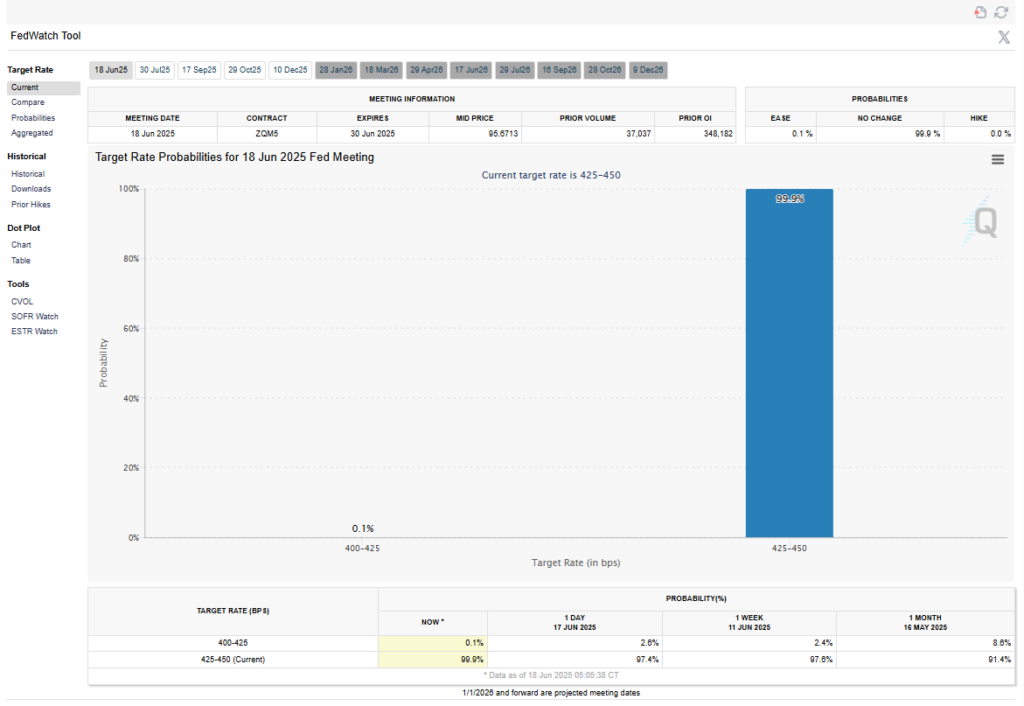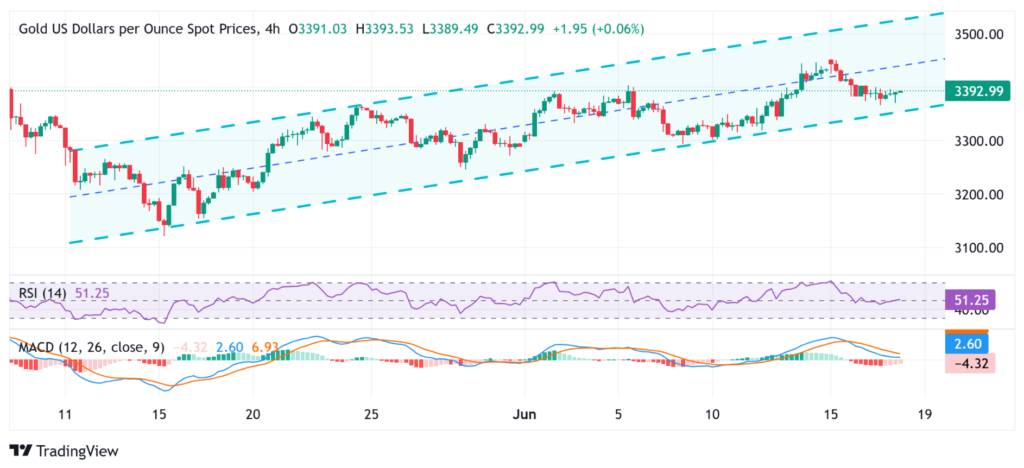
Gold prices fell on Wednesday as tensions in the Middle East failed to provide a sustained boost to the precious metal.
Gold prices initially rose at the week’s open due to Middle East developments, but the metal was unable to sustain gains and reach its record high, falling back to just under $3,400 per ounce.
Additionally, investors refrained from making significant bets ahead of the US Federal Reserve’s policy decision later in the day.
Investors are looking for signals on future rate cuts, though the central bank is widely expected to keep rates steady.
At the time of writing, the most-active gold contract on COMEX was at $3,396.81 per ounce, down 0.3% from the previous close.
“Traders now seem reluctant and opt to wait for more cues about the Federal Reserve’s (Fed) rate-cut path before placing fresh directional bets around the non-yielding yellow metal,” Haresh Menghani, editor at FXStreet, said in a report.
Amid anticipation of the central bank’s upcoming decision, the US dollar has surrendered some of the significant gains it achieved on Tuesday.
This decline is largely attributed to the increasing belief that the US central bank will restart its interest rate reduction cycle in September.
Rising geopolitical tensions in the Middle East and persistent trade-related uncertainties continue to dampen investor sentiment.
This situation is expected to help limit significant declines in the price of safe-haven gold.
Menghani added:
Hence, it will be prudent to wait for strong follow-through selling before positioning for an extension of this week’s retracement slide from a nearly two-month high.
Fed’s decision eagerly awaited
Even as US President Donald Trump’s tariffs could push up consumer price inflation, the central bank is expected to keep rates steady at its latest meeting.
The market will closely examine the accompanying policy statement, including the updated “dots plot,” and Fed Chair Jerome Powell’s remarks at the post-meeting press conference on Wednesday.
These will provide crucial indications regarding the trajectory of future rate cuts.
Heading into the crucial central bank event, Tuesday’s disappointing US macro data indicated a softening economy, reinforcing expectations of a Fed rate cut in September.

This restrained the overnight US Dollar rally, keeping it from surpassing its weekly peak.
In May, US Retail Sales saw a 0.9% decline, a sharper contraction than the anticipated 0.7% and the 0.1% dip recorded in April, as reported by the US Census Bureau.
Additionally, US Industrial Production in May fell short of estimates, contracting by 0.2% after a revised 0.1% increase the previous month.
Geopolitical tensions fail to provide sustained impetus
Meanwhile, simmering tensions between Iran and Israel have not been able to keep gold prices above $3,400 per ounce, let alone boosting it to record highs.
On Wednesday, Iran and Israel exchanged new missile strikes, marking the sixth day of their intense conflict.
Three US officials informed Reuters that the country is increasing its fighter aircraft presence in the Middle East, including the extended deployment of existing warplanes.
“The muted reaction (to geopolitical tensions) suggests that the rise in the price of gold, which has amounted to almost 30% since the beginning of the year alone, is increasingly seen as exhausted,” Thu Lan Nguyen, head of FX and commodity research at Commerzbank AG, said.
This is also supported by the recent sharp rises in other precious metals, such as silver and platinum, which are apparently being used as alternatives to gold.
Fundamentals remain favourable
However, the precious metal complex continues to benefit from a favorable environment, according to Nguyen.
Geopolitical uncertainty remains elevated, and the US tariff conflict is expected to negatively impact the economy.
These factors contribute to a preference for lower interest rates, which in turn encourages investment in gold.

Additionally, Nguyen also stated that investors are likely to increasingly withdraw from US investments unless there is a U-turn in the unpredictable US (tariff) policy.
She added:
We therefore consider it highly likely that gold will reach a new record high in the foreseeable future, even if the upward momentum is likely to lose considerable momentum compared to the first quarter of this year.
The post Mideast tensions fails to provide gold sustained boost; what’s next? appeared first on Invezz

